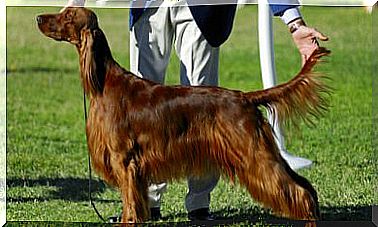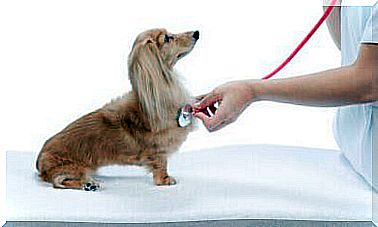How To Recognize Deafness In Dogs

Although deafness in dogs is a condition that usually appears in older animals, it may be that a young dog, perhaps due to a congenital or hereditary problem, suffers from it. It’s hard to know if our dog is deaf, but let’s give you some tips to recognize the symptoms in your pet and how to act.
Deafness in Dogs: Watch Your Pet
Sometimes deafness is not total, which makes it difficult to diagnose the problem. Of course, if our pet doesn’t pay attention when we call him, we talk to him and he doesn’t make any gestures, we know he’s deaf. But if the deafness is not total, things can get complicated.
This can make our dog sometimes hear us and sometimes not. Or, depending on the distance, he might hear us more or less clearly. In order to recognize your dog’s hearing problems, if any, you’ll need more than just watching your pet: you’ll need to give an attention test.
To do this type of test, you can use objects that you have at home and that your dog likes. For example, some keys. Approach him when you’re calm and, without him seeing, swing the keys to see if he reacts.

Deafness in dogs: at the veterinarian
If after doing these tests you realize that your pet may have a hearing problem, it is better to go to the veterinarian, who will perform the BAER test , with which it is possible to know the type of response in the dog’s brain before of sounds.
The test is carried out with electrodes that will be placed on the dog’s head and ears, and this will allow to recognize not only if there is a hearing problem, but also to what degree and in what area it is.
In addition, it allows recognizing the intensity with which the sound reaches the dog, as well as the response, however minimal it may be. There are other tests recognized by veterinary schools, but they are not as accurate as the BAER one, although there are many professionals who can opt for them: DPOAES, OAEs or cochlear microphones.
They are also used to diagnose deafness in dogs, but they cannot deduce how much intensity they receive, as well as the affected area. Even so, they are very reliable in their diagnosis.
What are the most common causes of deafness in dogs
The causes of deafness in dogs can be varied and, as mentioned, when the dog is young the problem can be congenital, hereditary or, even, originated from trauma. In the case of older dogs, there are several causes:
- Otitis with secretions
- Chronic otitis narrowing the ear canal
- Tympanic rupture
- bone degeneration
Poorly healed ear infections or bone loss caused by old age can cause your pet to hear nothing. You will wonder what you can do about it. The truth is, not much, just as we can’t stop the damage that aging does to us.
Even so, make an effort to make good hygiene in your pet’s ears, to avoid ear infections and infections , which can cause deafness in dogs. Giving bone-strengthening dietary supplements throughout your life can also be a good idea. But still, only time will tell how much age will affect your friend’s hearing.
Deafness in dogs is more common than you might think, so before your dog starts to suffer from it, why don’t you take steps so he doesn’t have it?









